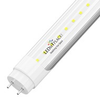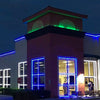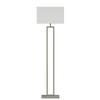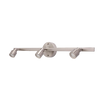LED High bay lights are important for stores as they need more illumination. Finding a high bay light that suits your preferences can be a bit tough but don't worry when we are here! With all the options available today, Here are some important tips to help you make the best decision in 2025.
Determine Your Ceiling Height

Begin with your ceiling height measurements. High bay lighting applications are typically 16 ft high or greater. Low bay lighting applications are where lower ceilings are needed. Ceiling height will dictate the wattage and lumen output for proper illumination. Here's a good rule of thumb:

Knowing your ceiling height ensures you pick the right light intensity for your space, maximizing visibility and safety.
Choose the Right Type
LED high bay lights are the favorite choice nowadays since they offer outstanding value through energy savings, long lifetime, and excellent light quality. LED lights use fewer watts; hence, they generate less heat, ideal for extensive application areas. Compared to the relatively less energy-efficient traditional metal halide and fluorescent high bay lights, which are still good enough according to budgets and lighting needs, the energy efficiency that LED high bay lights give out will be a more significant experience in years to come.

Consider the Lumen Output and Wattage
The lumen output measures the brightness of a light. For high bay lights, you’ll need to consider both lumens and wattage to ensure adequate illumination. Here’s a quick chart to help:

Higher lumens are ideal for tasks requiring precision, while general storage spaces may need fewer lumens. Choose the wattage that balances brightness with energy efficiency.
Opt for the Right Beam Angle

The beam angle will determine how the light spreads across a surface. Narrow beam angles, at around 60 degrees, focus down and are ideal for high bay applications with higher ceilings. For lower ceilings or broader areas, wider beam angles such as 90 to 120 degrees offer better coverage.
Think of it this way: if one is lighting aisles of a warehouse, then he would want the beam as narrow as possible so that most of the light would be concentrated to the area of path. However, if he is illuminating an entire factory floor, he would want a wider beam angle.
Look for Energy Efficiency and Cost Savings
Energy-efficient lighting money saved is money made in the long run. Obviously, you know that the consumption of electricity by the LED high bay lights would not be a lot along with having many lifetimes, thereby replacing far fewer lights and inexpensive electricity. Check the lumens-per-watt (lm/W) ratio; the higher the better. For this type of lighting, have lights with at least 130 lm/W to have maximum lumens for your money.

Additionally, consider fixtures with the ENERGY STAR label or DLC (Design Lights Consortium) certification, which meet strict energy efficiency guidelines.
Understand Color Temperature and CRI

Color temperature (measured in Kelvin) will impact the ambient value of your space. For high bay lighting:
4000K Neutral white light: This will be suitable for retail, gyms, or any such site.
5000K to 6000K: Bright, daylight-like light. It might be employed in warehouses or manufacturing plants, where emphasis is more on clarity than potential hazards of intense light.
The Color Rendering Index (CRI) is a measure of the ability of light to create colors that closely resemble real colors. A CRI value above 80 is quite good for most applications and causes colors to look generally as they ought to, to most people.
Evaluate Dimming and Controls
Dimming capabilities add flexibility, allowing you to adjust the light levels based on your needs and save on energy. Look for fixtures that support 0-10V dimming or DALI (Digital Addressable Lighting Interface) systems for advanced control. Motion sensors and daylight sensors can further enhance energy savings by automatically adjusting lighting based on occupancy and natural light levels.
Factor in Maintenance Costs and Durability
Choose fixtures with a long lifespan to minimize maintenance. LED high bay lights typically offer 50,000+ hours of operation, significantly reducing replacement and labor costs compared to traditional lighting options. Look for lights with robust materials and IP ratings (Ingress Protection) to ensure they can withstand dust, moisture, and other environmental factors.
Calculate Return on Investment (ROI)
High bay lights are more about ROI as you can consider for it the upfront cost and energy savings and the maintenance costs along with their lifespan to determine when your investment would pay itself back. The total investment in LED high bay lighting, though huge, would be almost covered by payback in a few years.
Conclusion: Make the Right Choice in 2025!
Choosing the right high bay lights involves understanding your space, lighting needs, and energy goals. By focusing on these key factors — from ceiling height to energy efficiency and maintenance costs — you can ensure that your investment will provide bright, reliable, and cost-effective lighting for years to come.
Ready to make a purchase? Explore our wide selection of high-quality high bay lights at LedMyplace and schedule a call with our experts to find the perfect solution for your space today!
To Know More Read Also: Why High Bay LED Lights Are the Ultimate Choice...


















































































